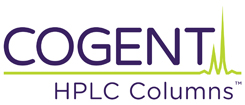There are a number of strategies to consider:
1. Change Solvent Percentages. In Reversed Phase HPLC, you have an aqueous component and an organic component (usually acetonitrile). Here, acetonitrile is the strong solvent, and higher percentages of it will result in lower retention. If you want to get better resolution of two peaks, they can be more strongly retained and separated by increasing the water content. This should be the first alteration of the mobile phase that you should consider since it is easy to do.
2. Change the Mobile Phase pH. If two compounds are not resolved, and they have different pKa, a change in the pH may be an effective way to obtain greater separation. Benzoic acid for example may be neutral at pH 2.5 but completely ionized at pH 7.0. The difference between ionized and neutral states may allow for additional selectivity in the separation. This should be the second thing to consider with alterations of the mobile phase. 0.1% formic acid makes for a good acidic additive in the mobile phase while 10mM ammonium acetate is good for near-neutral pH.
3. Use an Ion Pair Agent. Ion-pairing adds additional selectivity to a Reversed Phase retention mechanism. This may allow for further separation not possible by Reversed Phase alone. It should be considered after trying the other two options above because it does have disadvantages. The method may require longer than normal equilibration for the additive to fully load onto the column. It is also not suitable for MS and can be difficult to completely remove from the column. Ion pair reagents also have a history of reducing useful column lifetime for Type A and Type B silica based columns.
Of course, there are many other variables to try besides just the mobile phase. Column selection, temperature, and so forth can all play pivotal roles in the separation.


